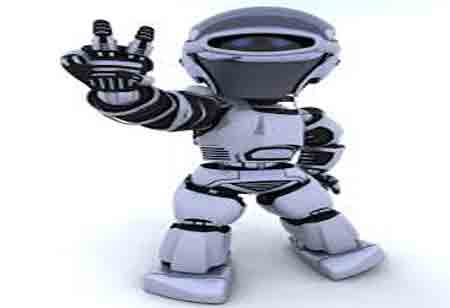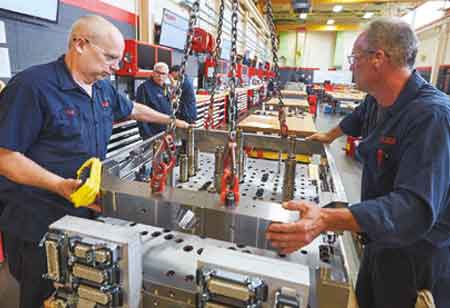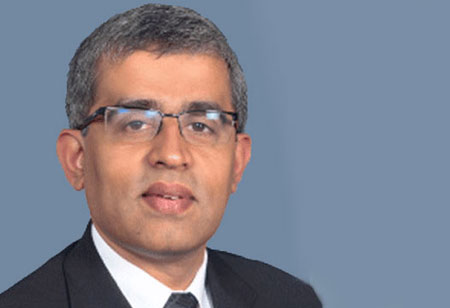THANK YOU FOR SUBSCRIBING

Robotics and Revolutionizing Technology
Yongyao (Max) CAI, Director of Engineering, TE Connectivity

 Yongyao (Max) CAI, Director of Engineering, TE Connectivity
Yongyao (Max) CAI, Director of Engineering, TE ConnectivityAn innovative and inclusive engineering leader with strong business acumen and team development skills, Yongyao Cai, is on the journey of adding golden feathers to his crown. Being in the industry for two decades, Cai acquired well-versed knowledge in a wide spectrum of topics such as electronic system design, algorithm development, industrial sensor, functional safety, robotic safety, 3D visions, magnetic sensors, and more. Currently, Cai works as a director of engineering at TE Connectivity.
Please tell our readers about your roles and responsibilities and the challenges you encounter on a daily basis.
Prior to joining TE Connectivity, I spent seven years at Rockwell Automation developing automation sensors and safety devices for industrial automation. One of the main challenges I faced was achieving a balance between safety and efficiency, particularly when it came to robotics. The growth of industrial automation led to the advent of a new concept known as collaborative robots, or Cobots. These robots assist humans in lifting objects weighing around 25-50 kilograms. Despite the development of robotics, the safety of humans remains a top concern. As a result, Cobots are limited in their ability to lift objects of a certain weight and also have restricted mobility.
The popularity of the Cobot concept is due to its ability to operate safely alongside humans in a shared workspace without the need for physical barriers. In traditional industrial automation environments, robots moving heavy payloads are typically fenced off, preventing people from being in the same workspace. This approach results in unnecessary space usage. With the growing demand for customized products from consumers, manufacturers must design flexible production lines that can quickly switch from one product to another. However, since robots are often hard-coded to perform specific tasks, work independently, and remain stationary, flexibility is challenging to achieve. Additionally, human intervention is often necessary in assembly lines, such as engine assembly lines in automotive factories, where people are required for tasks such as tubing, cabling, and spark plug assembly. Therefore, close collaboration between humans and robots cannot be avoided. As a result, there is a need for industrial robots that are fast-paced, able to carry heavy and light payloads, and can work alongside humans without the need for physical barriers. This is what we envision as the next step for the future of industrial automation and robotics.
Can you talk about any recent project initiative you have been part of lately?
Recently, our team has been working on a 3D vision system that enables object detection. Traditional industrial automation sensors are often limited in their detection area, such as proximity sensors that only detect objects in close proximity. However, the growing need for a more flexible manufacturing environment that incorporates robots requires the ability to detect objects in three dimensions, enabling precise positioning and picking by robotic arms. Alongside 3D vision and robotic safety, we are also currently working on machine condition monitoring, which is a crucial aspect of ensuring optimal performance and reducing downtime in industrial automation.
" The manufacturing industry is currently transitioning toward smart manufacturing with this companies can now take full advantage of the hardware they already have in place "
Can you share any of the future technology trends you are excited about?
One technology that I find particularly exciting is the Time of Flight (ToF) 3D sensor. This sensor measures the time it takes for light to leave an object and reflect back to the sensing device. This time difference indicates the distance between the object and the sensor. The ToF principle has been used in various technologies, but it has recently been implemented in optical sensor light and 3D cameras. The best example of this is the Lidar, which has gained significant popularity in autonomous vehicles and is now being adopted in industrial automation as well.
Can you share some of the challenges you notice in the industry?
One of the main challenges that I have noticed in industrial automation is balancing collaborative robotic safety with improving the operational efficiency of production. Improving Overall Equipment Effectiveness (OEE) is critical for our customers, and reducing equipment downtime is essential. In order to achieve this, implementing preventive maintenance instead of reactive maintenance is becoming increasingly important, as production in factories can be costly, and any steps taken to reduce downtime are precious to customers. Finding the right balance between safety, efficiency, and maintenance strategies is key to optimizing production processes and delivering value to our customers.
What is your piece of advice to your fellow peers as well as the budding professionals in the industry?
The manufacturing industry is currently transitioning toward smart manufacturing, where companies need to invest heavily in intelligent technologies in addition to hardware. Historically, hardware has been the primary focus and revenue generator for these companies. However, with the rise of smart software, companies can now take full advantage of the hardware they already have in place. To fully realize the potential of smart manufacturing, it is necessary to invest heavily in software development, algorithms, artificial intelligence, and the Internet of Things (IoT).
Read Also





















ON THE DECK